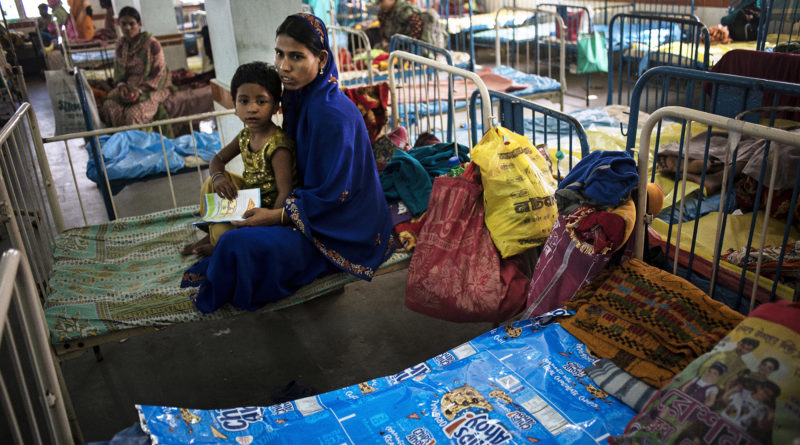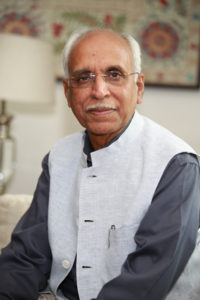Coping with Challenges
As unfavorable outcomes cannot be ruled out, medical professionals need to make a sincere attempt to adhere to patient safety guidelines, improve communication and adopt efficient work processes and documentation. Patients on their part need to take a realistic view of the cost of healthcare as absence of safety may cost lives
By Dr Vijay Agarwal
There is hardly a gathering where medical profession is not being discussed with negative overtones. Not a day passes when the media does not draw attention to some event which serves to continue to multiply the trust deficit between public and medical professionals.
Highlighting of medical errors by media and violence faced by medical profession, has pushed medicos to the wall and has left them bewildered.
A dispassionate analysis will reveal the problems to exist at many levels. Let us look and discuss two major situations faced by the community and talked about in the media:
Unfavorable outcomes:
Healthcare delivery has become so complex and hi-tech that even advanced countries are grappling with the issue of adverse events and unfavorable outcomes. The Joint Commission’s Annual Report on Quality and Safety 2007 found that inadequate communication between healthcare providers, or between providers and the patient and family members, was the root cause of over half the serious adverse events even in accredited hospitals. Other leading causes included inadequate assessment of the patient’s condition, and poor leadership or training. Inadequate documentation adds to the problems in case of dispute.
One of the reasons for this scenario has been the fact that clinicians have kept themselves away from learning soft skills and unfortunately this aspect is still not a part of our medical curriculum. Added to this scenario is also the inability of the clinician to comprehend that delivery of healthcare service is now teamwork.
There is a dire need for medical professionals to make a sincere attempt to adhere to patient safety guidelines, improve on communication with patients and adopt efficient work processes. Patient safety has become a distinct healthcare discipline. Extensive research across many disciplines is enriching this specialty.
Clinicians are rather reluctant to learn from quality/hospital managers who have learnt on the job and are “specialists” in quality. Most of the time, these quality managers are much junior in hierarchical set-up of the hospital and are not able to convince senior clinicians about the need for following processes and documentation. On the other hand, senior administrators focus their entire attention on the balance sheet and consider issues raised by the quality manager as unnecessary. Needless to say, quality implementation can happen only with the active involvement of all stakeholders and with clinicians taking up the leadership.
The SOPs and guidelines have to be owned by all the members of a department/hospital. In most hospitals there is no concept of regular structured Departmental or Functional Group meetings (Operational Excellence Meetings).
The concept of “Operational Excellence Meetings” involves all departments in association with Quality team and Management representation and has a defined agenda for discussion at predefined and regular intervals. These meetings help clinicians and nurses be responsible for quality while the role of quality personnel is to mainly audit the work; and to present the findings in these meetings.
Exorbitant Cost of healthcare:
In the mind of the public, the cost of private healthcare has become “unreasonably” expensive and the reason for this is perceived to be ethical and malpractice issues.
When something is termed as “unreasonable” there is a need to understand the foundation, i.e., the cost of quality healthcare delivery. No doubt, this answer is not readily available as it is far more complex than it sounds. Various efforts have been made to work out package costs for various procedures. Here again, there are many variables depending upon, whether the hospital is secondary care or tertiary care, whether it is single specialty or multi-specialty, whether the hospital is located in tier-I, II or III city. A few insurance companies have attempted to develop differential packages based on some of these considerations. In case of some of the government health insurance schemes, the costing of various procedures has been fixed on the basis of L1 (lowest) quote from the tenders invited from private hospitals. However, these efforts have not met the expectations of either the consumers or the health care providers.
Analyzing Operational Healthcare Cost:
The major cost heads factored for computing the operational cost of a procedure are generally taken based on the direct cost comprising of fee to the doctor and cost of drugs and other medical consumables. There are other innumerable indirect costs i.e. salary for allied healthcare workers including nursing staff, lease of land/rent, administrative cost, power and utilities, legal and regulatory compliance and the cost incurred on marketing and advertisement of services. The interest on the capital employed for plant and machinery and the working capital is also significant. Medical equipment is expensive, has a limited life resulting in depreciation adding to the cost.
Pricing for most procedures is arbitrary and is based on market forces rather than on actual costing. Hospitals are making money on some components while losing on many others. The money making ones get highlighted while the very economical ones are not mentioned at all. Despite the perception that private hospitals make huge profits, the fact is that most of these establishments are financially stressed and ROI (Return on Investment) is very slow and poor. Hospitals need to correct their billing and pricing procedures and the community must understand this and give time for this change to happen. One of the simple ways to understand the cost involved in healthcare delivery will be to analyze the expenditure in Government run hospitals.
Healthcare is also becoming an election agenda and an increasing number of government health insurance schemes are being launched for certain section of the society to meet with the intended objective of Universal Health Coverage. These are largely cashless schemes where patients can visit hospitals of their choice and receive treatment for secondary/tertiary levels of ailments. As per an estimate made by the World Bank, nearly 50% of Indian population is being covered under some or other kind of insurance. Yet, the flip side is that scheme owners (government) have been fixing the package rates for various medical procedures unilaterally without involvement of healthcare providers. Most of these rates are unviable for tertiary care/ super-specialty hospitals complying with quality standards as shown by a recent study conducted by Govt of Karnataka with support from IIMB, AHPI and CAHO.
With a large majority of population getting covered either through government insurance or through private insurance, hospitals will be left with little option but to accept patients at these unviable rates. While hospitals may manage some degree of sustenance through cross subsidizing from cash paying patients, it is a situation that will ultimately affect the quality of services for very obvious reasons. The Government and insurance companies therefore need to take cognizance of the fact that safe healthcare would cost a definite amount, whereas absence of safety may cost lives and accordingly need to fix the cost of medical procedures on scientific basis, and not on basis of tendering and perception.
There is a general perception that healthcare is expensive for the simple reason that the common man does not budget for it. Sickness is never anticipated and is considered as a not-likely-to-happen event. Under the circumstances, the cost of treatment for major ailments appears deceptively high. Yet another reason for such a perception comes as government run community health centers or hospitals extend free healthcare services. We do not realize that FREE healthcare is actually not FREE. It comes from the tax payer’s pocket.
Steering Healthcare Standards
Dr Vijay Agarwal is, currently, the President of Consortium of Accredited Healthcare Organization (CAHO) and Advisor to Max Healthcare focused on Quality & Business Excellence. He is an Advisor to Global Association of Physicians of Indian Origin.
Over the last four decades he has played a key role in making an impact in improving the state of healthcare in India. He played an anchor role in driving national programs such as Pulse Polio Program and introducing Centralized Waste Management Scheme in Delhi. These programs have had far-reaching impact.
He has been the chairman of Nursing Home Forum of Delhi for ten years from 1992 to 2002.
Dr Agarwal is a graduate and post-graduate in paediatrics from the prestigious Maulana Azad Medical College and continues to leverage his expertise as an excellent organizer, strategist & administrator.
He is playing an important role in promoting quality through accreditation in healthcare. He is the co-chairman of Accreditation Committee of NABH (National Accreditation Board for Hospitals & Healthcare Providers).
He has conceived the idea of training quality implementers in the country. Already, more than 280 professionals have been trained in the basic program approved by NBQP. The advanced program has been approved by HSSC
(Health Sector Skill Council) and has 80 plus professionals who have been trained.
He is the founder President of Society for Child Development. The society works towards vocational training of mentally challenged children and their work has footprints all over the country.
He is a recipient of Distinguished Alumnus Award of Maulana Azad Medical College and Lifetime Achievement Award of Indian Medical Association


